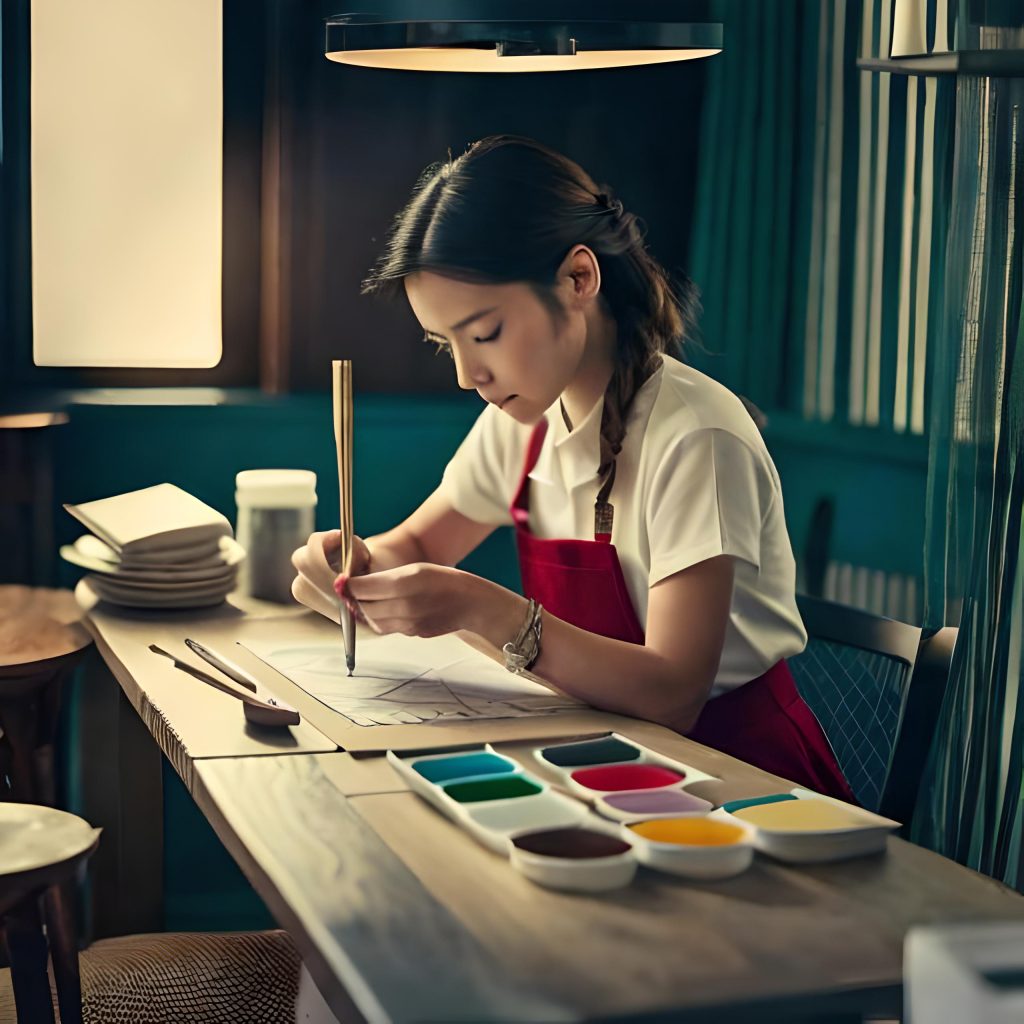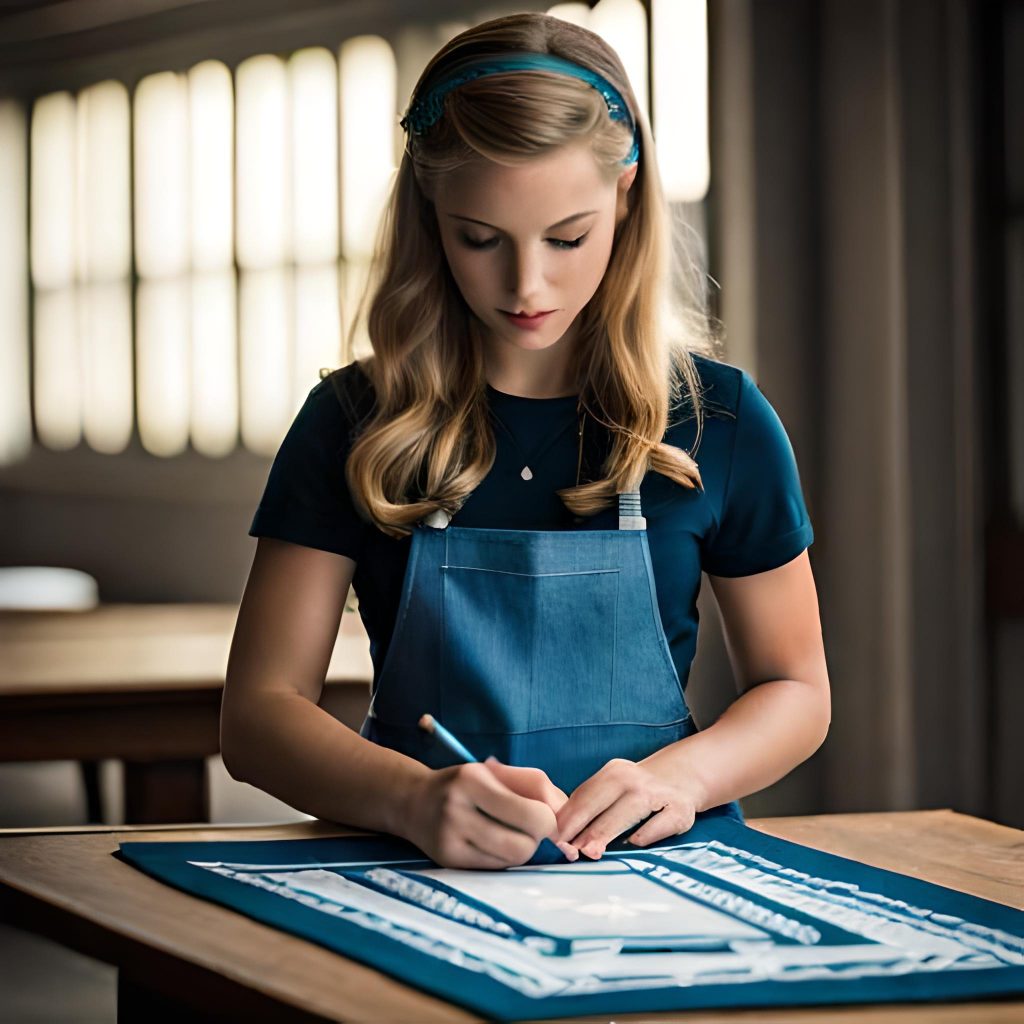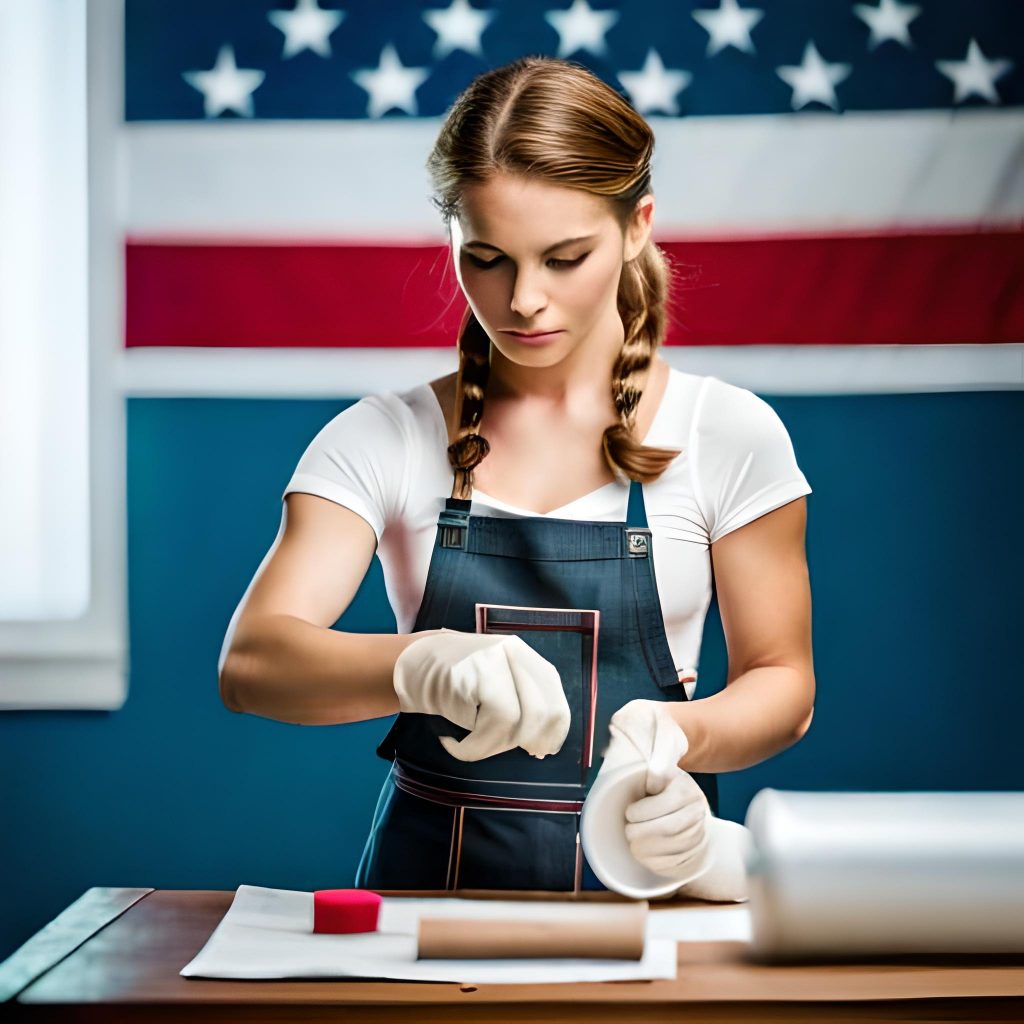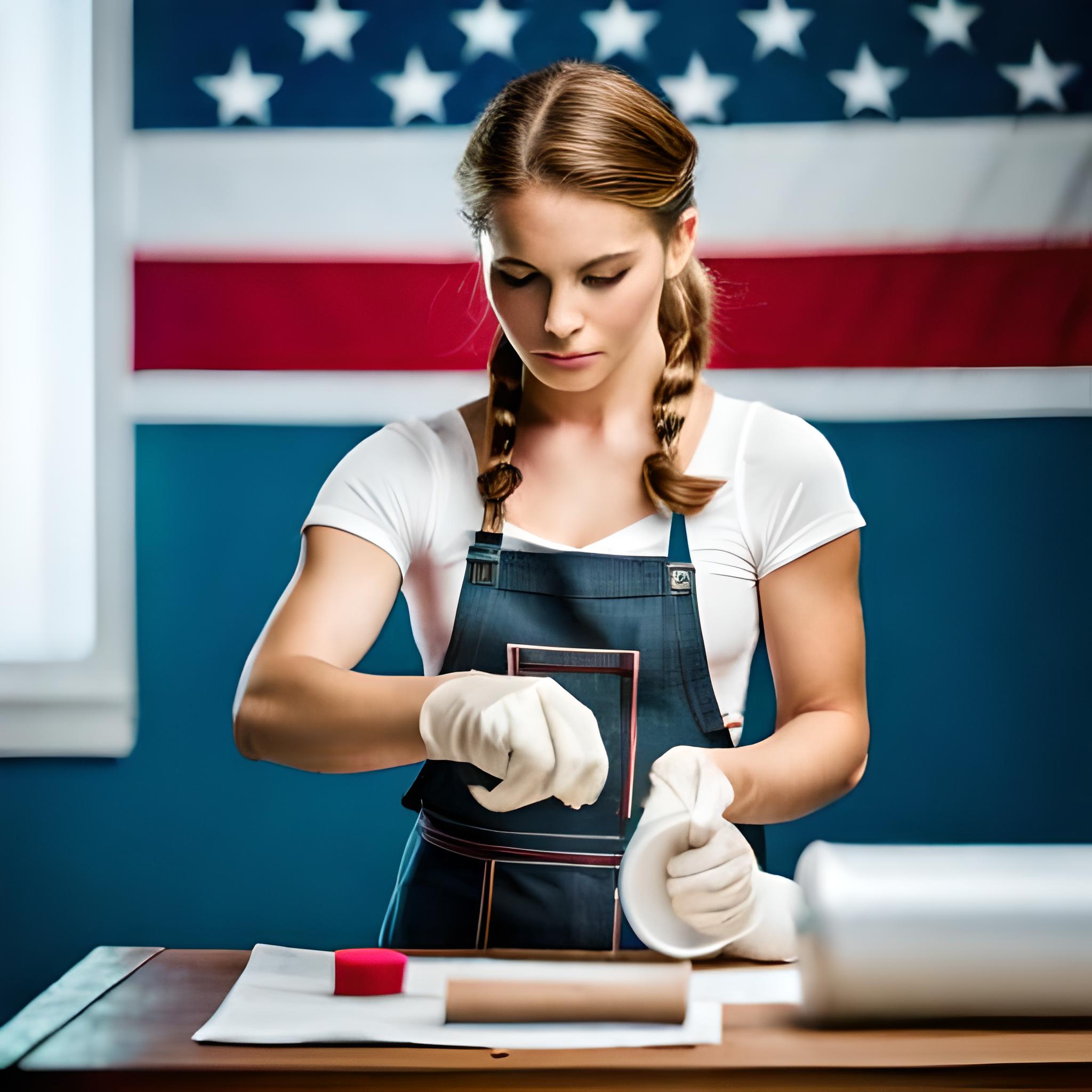Introduction:
In a world that values self-expression and individuality, embracing creativity is key. One powerful medium for unleashing your artistic potential is fabric painting. With fabric paint, you can transform plain fabrics into stunning works of art that reflect your unique style. In this article, we’ll explore 10 mind-blowing fabric paint techniques that will ignite your creativity and inspire you to embark on exciting artistic journeys.

Getting Started with Fabric Painting
A. Gathering the Essential Materials
To embark on your fabric painting adventure, you’ll need a few essential materials. First and foremost, acquire fabric paint in various colors that suit your artistic vision. Additionally, invest in a selection of quality brushes suitable for fabric painting. Finally, choose the fabric you wish to paint on, ensuring it is prewashed to remove any sizing or chemicals that may hinder paint adhesion.
B. Preparing the Fabric
Before diving into painting, it’s crucial to prepare your fabric properly. Start by prewashing it to remove any dirt or chemicals. Once clean, iron the fabric to create a smooth and wrinkle-free surface. This step ensures that the paint will adhere well to the fabric and produce vibrant results.
10 Mind-Blowing Fabric Paint Techniques
1. Tie-Dye Effect
The tie-dye technique has stood the test of time for its vibrant and psychedelic patterns. To achieve this effect with fabric paint, begin by folding and tying the fabric in various ways. Then, apply different colors of fabric paint to the fabric sections. The paint will blend and create mesmerizing patterns once the fabric is unfolded and dried.
2. Stenciling
Stenciling allows you to create precise and intricate designs on fabric. Begin by securing a stencil on your fabric and use a brush or sponge to apply the paint within the stencil’s openings. Experiment with different stencil designs and colors to create stunning patterns that reflect your personal style.

3. Block Printing
Block printing is an ancient technique that involves carving designs into blocks and then applying paint to transfer the design onto fabric. Start by carving your desired design onto a block. Next, apply fabric paint to the block and press it firmly onto the fabric. Repeat the process to create beautiful, repetitive patterns.
4. Sponging
Sponging is a versatile technique that allows you to achieve various effects, from gradients to textures. Dip a sponge into fabric paint and gently dab it onto the fabric, creating soft or bold strokes. Experiment with different sponge sizes and pressure to achieve the desired effect.
5. Resist Painting
Resist painting involves using wax or glue to create areas where the paint is blocked from adhering to the fabric. Apply the resist material onto the fabric in your desired design or pattern. Once dry, paint over the entire fabric. After the paint has dried, remove the resist material to reveal the striking contrast between the painted and unpainted areas.

6. Screen Printing
Screen printing offers a professional and refined look to your fabric paintings. Start by creating a screen with your desired design. Then, place the screen onto the fabric and apply fabric paint over it using a squeegee or a brush. The paint will pass through the screen and leave behind a clean and detailed print.
7. Splatter and Drip Painting
For a playful and abstract approach, try splatter and drip painting. Dip a brush into fabric paint and flick it onto the fabric, creating splatters. Alternatively, load a brush with paint and allow it to drip onto the fabric. This technique allows for spontaneous creativity and unique patterns.
8. Appliqué with Paint
Combine fabric painting with appliqué work to add texture and dimension to your creations. Start by attaching fabric pieces onto your base fabric using fabric glue or stitching. Then, enhance the appliqué by painting over it with fabric paint, emphasizing details or adding shading.
9. Freehand Painting
Freehand painting is an opportunity to let your imagination run wild. Use brushes or fabric markers to create intricate designs directly on the fabric. Start with simple shapes and gradually build up more complex patterns. Don’t be afraid to experiment and let your creativity guide you.
10. Embellishments and Mixed Media
Elevate your fabric paintings by incorporating embellishments and mixed media. Experiment with adding beads, sequins, ribbons, or even embroidery threads to your painted fabric. This combination adds texture and visual interest, making your creations truly one-of-a-kind.
Tips for Success
A. Choosing the Right Fabric Paint
When selecting fabric paint, consider the type of fabric you’ll be painting on and the desired effect. Some fabric paints are specifically formulated for certain fabric types, such as cotton or silk. Read product labels and choose the paint that suits your project best to achieve optimal results.
B. Preparing Your Workspace
Create a comfortable and organized workspace for your fabric painting endeavors. Lay down protective covers or old newspapers to avoid any paint spills or stains. Ensure proper ventilation and have water nearby for cleaning brushes and blending colors.
C. Practice Makes Perfect
Like any skill, fabric painting improves with practice. Start with small projects and experiment with different techniques and color combinations. Don’t be discouraged if your first attempts don’t meet your expectations. Embrace the learning process and keep honing your skills to achieve the results you desire.
D. Caring for Fabric Painted Items
To ensure the longevity of your fabric painted items, follow the manufacturer’s instructions for washing and care. Some fabric paints require heat-setting, while others may be machine-washable. Treat your fabric painted creations with care, and they will bring joy for years to come.
Inspiration and Beyond
The possibilities of fabric painting are truly limitless. Explore online resources, books, and fabric painting communities for inspiration. Adapt the techniques you’ve learned to suit your unique style and create artwork that tells your story. Let your creativity flow beyond the boundaries of this article and unlock new artistic horizons.
Conclusion:
Unleashing your creativity through fabric painting is a delightful journey that allows you to express your unique style and create wearable art. By exploring the 10 mind-blowing fabric paint techniques covered in this article, you can unlock endless possibilities for transforming plain fabrics into mesmerizing masterpieces. Embrace the joy of experimentation, practice your skills, and let your imagination guide you. Start your fabric painting adventure today and watch as your creativity flourishes.
FAQ (Frequently Asked Questions):
Q1. Can I use fabric paint on any type of fabric?
A1. While fabric paint can be used on a wide range of fabrics, it’s essential to choose the appropriate paint for the fabric you’re working with. Some paints work better on natural fibers like cotton, while others are suitable for synthetic fabrics. Read the product labels or consult the manufacturer’s guidelines for the best results.
Q2. Is fabric painting suitable for beginners?
A2. Absolutely! Fabric painting is a fantastic creative outlet for beginners. The techniques covered in this article range from simple to more advanced, allowing you to start at your comfort level and gradually expand your skills. Don’t be afraid to experiment and have fun along the way.
Q3. Can I wash fabric painted items?
A3. Yes, many fabric paints are designed to withstand washing. However, it’s important to follow the specific instructions provided by the manufacturer. Some paints may require heat-setting before washing, while others may be machine-washable without any additional steps. Proper care will ensure that your fabric painted items retain their vibrancy and longevity.

